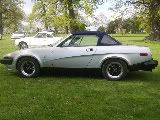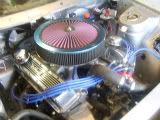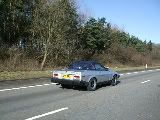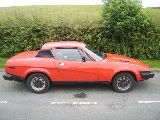Postby Workshop Help » 24 Jun 2014 12:21
!!!W-H-O-A!!!
Pardon my inquisitive nature here, but, having viewed your website I see the TR7 in question ain't exactly your typical TR7. Not by a long shot! What gave it away were the dual exhausts in Photo 2, then the interior of Photo 3. This car is a hot rod sleeper and leaves me with the impression there are more than four 500cc cylinders in the engine bay. It used to be a 5-speed and now it uses an automatic gearbox. And, what's with all those toggle switches and mysterious buttons?
My friend, being your website features a whole bunch of competition accomplishments, your background and the initial impression of this TR7 leads me to opine that you know very well about vehicular performance with the need for equal braking safety, AND you have the financial where withal to afford proper equipment.
Please, my friend, most any kind of increase in the power output places a stock TR7 braking system over the edge of realistic safety. Please, my friend, spend the money and replace the entire braking system to suit the engines power. The stock U.S. Federal engine produced under 100BHP. In fact for your 1980 model, the amount was a paltry 89BHP. The stock braking system was built to accommodate a power output of about 120BHP at the most. The stock TR8 with it's pathetic stock 133 BHP and 148lbs of torque required significant alterations to the brakes.
My point is, do not allow your future widow to collect on the life insurance until you waste away in extreme old age. Forget about the MGB brake reservoir. Get yourself a braking system that will haul you down as fast as you got up there. Please!
Mildred Hargis






